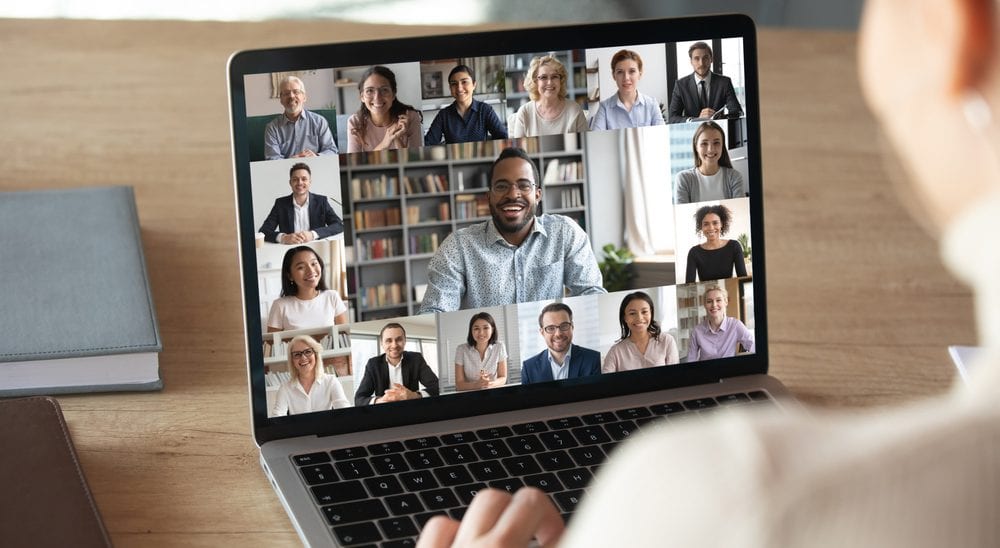Work at home or return to the office? How to enjoy the best of both worlds…

Gregg Lalle, SVP, International Sales and Strategy at ConnectWise, looks at the priorities for business to succeed with remote or hybrid workforces.
This year has presented us with previously unimaginable uncertainty, changing life and the workplace as we know it. Week by week, scientific guidance, government policies, health reports, and employee surveys bring new and contradictory guidance around the best work procedures. And, with future waves of the pandemic forecasted – including possible regional and national lockdowns – this uncertainty shows no sign of slowing down. Nor will conversations around the practices and processes of bringing employees back into physical office spaces.
With so much ambiguity, it’s clear why employees have mixed feelings about returning to the office, and it’s important that employers are understanding of any apprehension. Furthermore, many employees have become accustomed to the flexibility that a remote or hybrid work lifestyle offers. A recent report by academics at Cardiff University and the University of Southampton found that the majority (88%) of employees who worked from home during lockdown, would like to continue doing so in some capacity.
When restrictions ease and employees feel safe returning to the office, it is vital that businesses reevaluate their work-from-home (WFH) policy, considering how lessons from the past few months may affect their future business model.
With this in mind, here are five priorities for successfully facilitating a hybrid workforce for the transition into post-pandemic reality:
1. Communication is key
People are the heart of any business, and their needs must be prioritised in any decisions or new business frameworks. It is integral to cultivate a safe environment where employees feel comfortable sharing their thoughts and feedback regarding the return to office. To build trust throughout their organisation, business leaders should keep a clear and open dialogue about any possible plans.
When communicating virtually, ‘checking in’ with the workforce also provides a sense of comfort and connection. This should be a habit which continues through into the planning period, transition phase, and beyond. When running a hybrid workforce, it is important to resume virtual communications so to not neglect those employees working from home. This will help cultivate a sense of ‘togetherness’, even when split across both a physical office and remote working environments.
2. Stay cyber secure
Without the benefit of planning, the initial top priority for business leaders when lockdown began was purely trying to get their colleagues connected and working. As a consequence of that, security took a backseat and valuable steps were overlooked to ensure proper procedures were implemented. This may have left their systems and laptops vulnerable to threat, as overlooking basic security procedures, or not taking the proper steps to protect corporate data, increases a company’s threat surface. As employees begin returning to the office, organisations need to address any possible issues: triaging which laptops, desktops, networks, systems and devices need immediate attention.
Preparing for a hybrid workforce means paying attention to cyber security, executing simple and affordable practices to protect the business from major threats. These include: ensuring that antivirus software is updated, multifactor authentication is enabled, and that employees are using the right firewalls. Reacting to ransomware, disaster recovery and data loss can be both stressful and financially burdening, so organisations should be proactively secure by ensuring they have the right tools in place.
3. Ask the experts
Balancing employees returning to the office with remote workers can be complicated, meaning focus needs to shift to adapting to a post-pandemic normal. This requires correctly setting up tools and resources to improve security and fixing any issues caused by remote work environments.
Business leaders need to consider if they have the right staff and enough understanding to ensure equipment is secure. For SMEs and businesses recovering from the economic downturn, the answer is likely no.
Outsourcing specialised companies to manage IT infrastructure means companies are able to prioritise business, whilst technology is managed by a third-party. This initial investment can save money long-term, ensuring employees both at home and in the office are working securely and efficiently.
4. Refining your approach
The coronavirus pandemic changed working life for us all. But whilst some businesses successfully adapted to new working conditions, with little or no financial disruption, others were heavily impacted. For these struggling businesses, there is an eagerness to regain the rhythm of pre-pandemic business life.
However, these organisations should allow themselves adequate time to get back on track. Whilst there can be a pressure to rush back in and make up for lost time, a good recovery can mean slowing down and refining your offerings. Ultimately, re-evaluating the best way to invest time and energy, helps build credibility and enables businesses to stabilise their customer base.
5. Money matters
It is not currently known what the long term economic repercussions of the pandemic will be, but in the short-term many businesses will continue to be affected. It is important that companies assess their costly outgoings and see where savings can be made.
Businesses that have realised the benefits of remote working, or that favour a hybrid workforce moving forward, may wish to reconsider the size of their office space, or even evaluate the value of a flexible workspace alternative. Companies should also ensure that they are only investing in affordable and reliable tools which will proactively protect their IT infrastructure. In times of economic hardship, every pound matters, so establishing where cuts can or should be made will put companies in good stead moving forward.
The tumultuous events of the past months have had a massive impact on how and where we work. But with expert help, and a thorough review of future plans, organisations can ensure they are prepared for any eventualities and for a future that is truly hybrid.
